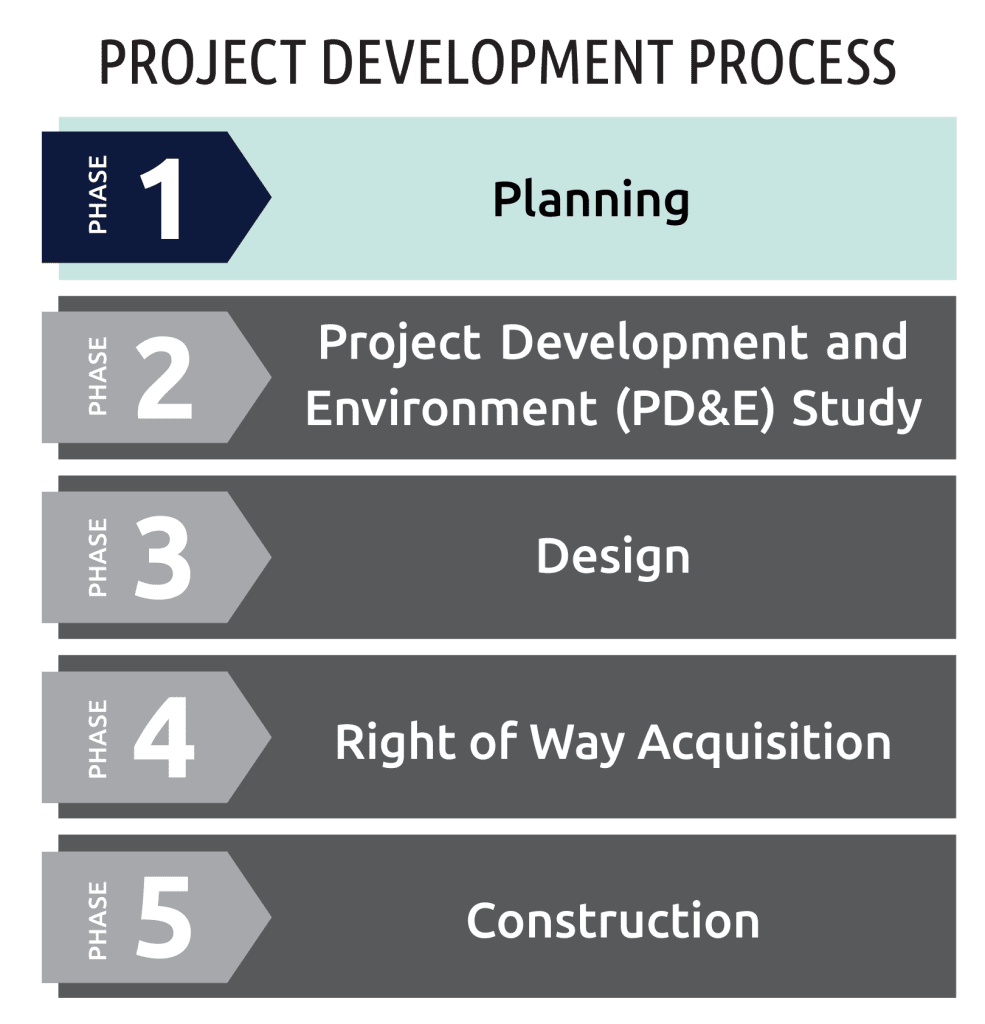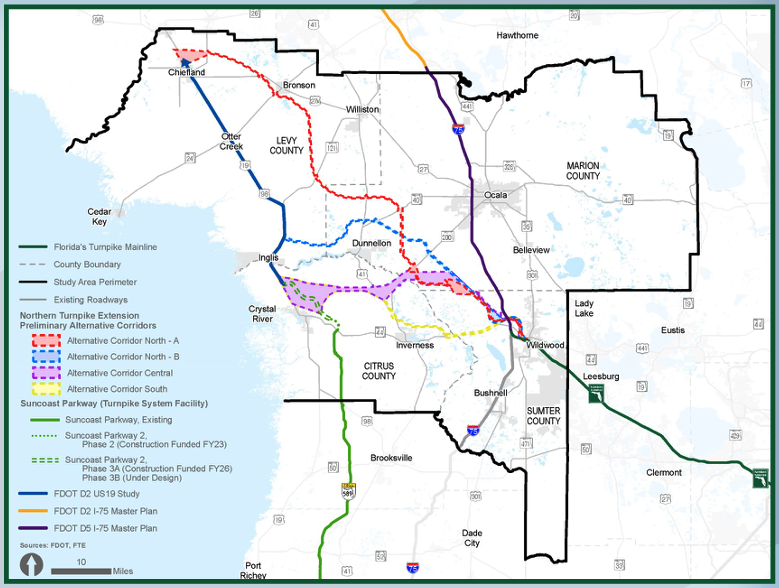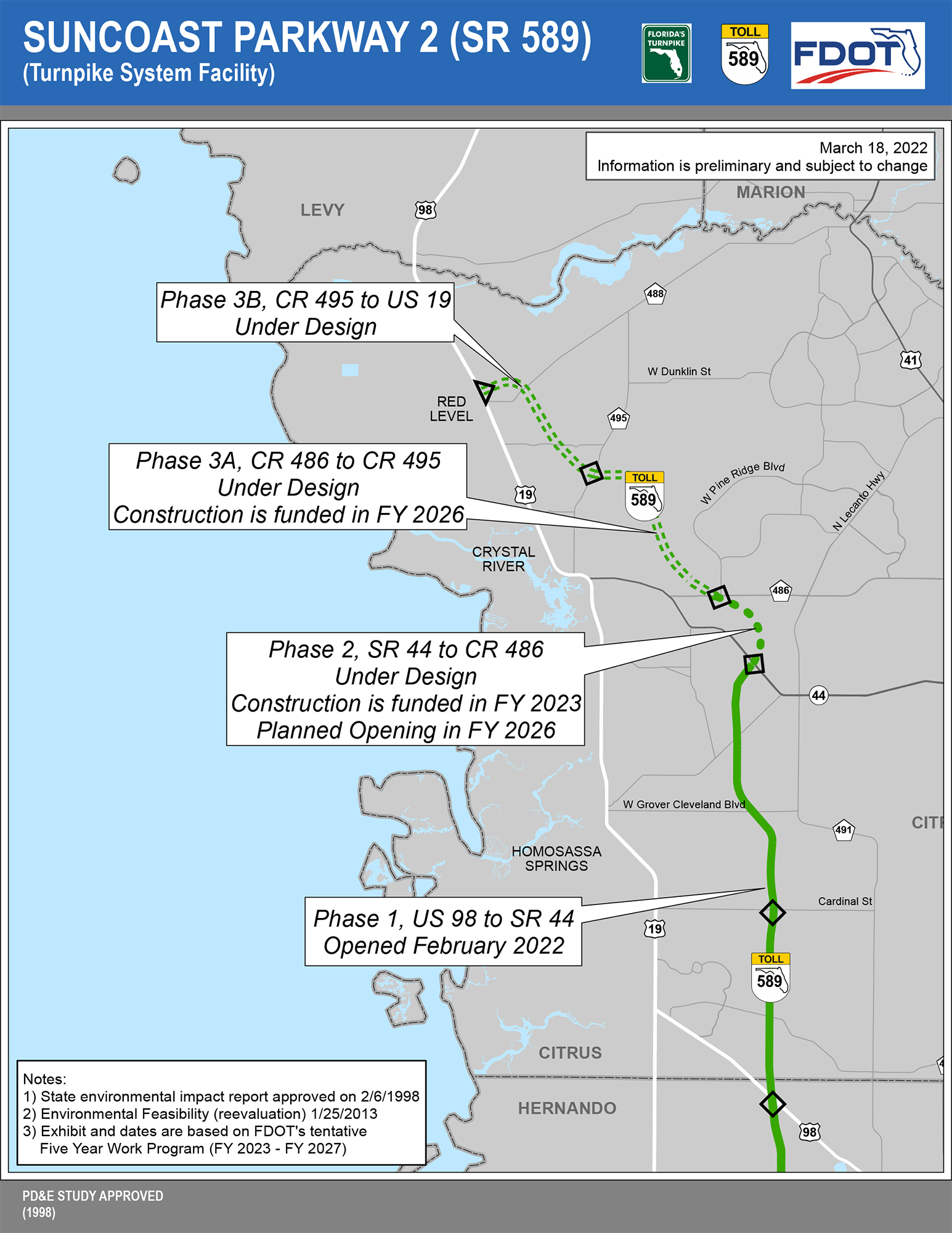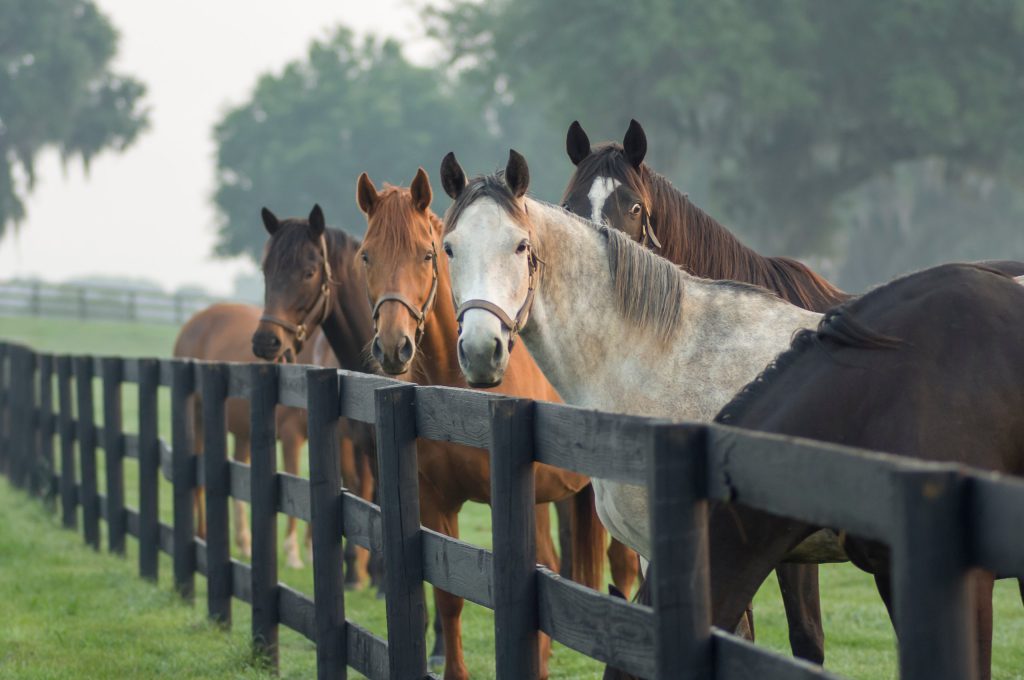We Sat Down with FDOT and Learned Some Things about the Northern Turnpike Extension That You May Not Know
In October 2021, Florida’s Turnpike Enterprise (FTE), part of the Florida Department of Transportation (FDOT), began an Alternative Corridor Evaluation (ACE) study to evaluate the extension of Florida’s Turnpike from its northerly terminus in Wildwood to a logical and appropriate terminus as determined by FDOT. The Northern Turnpike Extension (NTE) study area includes Citrus, Levy, Marion, and Sumter counties.
Horse Farms Forever® has taken a neutral position on the ACE Study because the four proposed corridors were not located inside the Farmland Preservation Area.
HFF’s policy statement on transportation reads: Any new road projects within the Farmland Preservation Area should use existing rights-of-way. This position aligns with Marion County’s Comprehensive Plan Policy 3.3.1 Elements of Rural Character which states: “Transportation: New transportation corridors intended to be used specifically for the construction of expressways or limited access roadways shall avoid the Farmland Preservation Area.”
In our role as a watchdog of government actions, Horse Farms Forever® staff recently met with members of the NTE project team from FTE to learn more about the process of developing corridors and the parameters used to evaluate corridor alternatives, and ultimately select a route for the proposed NTE.
Phase 1 Is All About Choosing A Corridor
In the next 20 years, Florida’s population is projected to increase by five million people to 26 million residents.(1) With this expected population growth, the transportation systems must also grow to provide a safe and reliable transportation network. To accommodate this growth, FTE is conducting a study to evaluate an extension of Florida’s Turnpike. The ACE process is used to identify, evaluate, and eliminate alternative corridors on qualifying projects. The main goal of the ACE study is to narrow the potential four corridor alternatives down to one corridor.

Phase 2 Will Look At Several Alignments – And Also No Build
The recommended corridor from the ACE study is the basis for Phase 2 of the project, the Project Development and Environment (PD&E) study phase. In this phase, the recommended alternative corridor goes through further detailed evaluation to refine a range of alternatives within the selected corridor. The PD&E study will also evaluate a No-Build option as well as potential Transportation Systems Management and Operations (TSM&O) improvements such as ramp signals or work zone traffic management.
“It’s a long process and we are very early in the planning phase. There are five steps from planning to construction and finally operation,” said William Burke, FTE Project Manager (HDR). “We are evaluating all of the corridors against the goals of the project, but also how they impact the environment, traffic, and cost.”
Jennifer Stults, FDOT Planning and Environmental Management Administrator, emphasized that this phase is focused on mapping by using Geographic Information Systems (GIS) data and characterized it as an exercise in avoidance to help protect environmentally sensitive areas, natural resources and residential areas.
“At this phase, the corridors are broad to allow us to evaluate the area, but we will narrow the focus and refine the corridors based on information that is processed. This will allow us to accommodate those areas that we want to avoid,” said Stults. She also emphasized that the project team is sensitive to local land use decisions and conservation areas. “We want to be a good partner,” said Stults. “We work closely with our local partners to identify some of the things in process that we would not be aware of yet. This is why our ongoing robust community engagement work is so important. We absolutely want to hear from our stakeholders.”
For example, not only are existing conservation areas avoided, but also the areas that have been identified for conservation as part of a local or state program, or those areas that are part of the optimum boundary of the conservation area. In addition to public conservation lands such as state parks, the team is also mindful of privately-owned land with a conservation easement that has been delineated in the GIS mapping data.
“There are a lot of different types of conservation land with different types of habitat, and if there is land with a conservation easement here and one without a conservation there, we are going to route around the land with the easement whenever possible,” said Burke. “There could be some exceptions, but generally speaking we would avoid those areas as much as possible.”
Conservation Is Written Into The Statute
The ACE study will identify preliminary environmental impacts and any potential impacts to existing conservation lands will be further evaluated and mitigated in the PD&E study to the greatest extent possible.
There are two important sections in the enabling Statute to mitigate environmental impacts:
(7) The department shall consider innovative concepts to combine right-of-way acquisition with the acquisition of lands or easements to facilitate environmental mitigation or ecosystem, wildlife habitat, or water quality protection or restoration.
(8)(b) To the greatest extent practicable, roadway alignments, project alignment, and interchange locations shall be designed so that project rights-of-way are not located within conservation lands acquired under the Florida Preservation 2000 Act established in s. 259.101 and the Florida Forever Act established in s. 259.105.
NTE Scope Is Narrower than M-CORES
The NTE and Multi-use Corridors of Regional Economic Significance (M-CORES) program are different projects. The goals of the NTE are to enhance regional connectivity, accommodate increased travel demand, address regional congestion and safety, and improve emergency response. The M-CORES program conversely had a broader statewide goal of implementing regional corridors that were intended to accommodate multiple modes of transportation and multiple types of infrastructure. The M-CORES program was planned to address various issues beyond those typically accommodated in FDOT projects such as broadband, water, and sewer connectivity; energy distribution; trade and logistics; mobility as a service; and availability of a trained workforce skilled in traditional and emerging technologies, among others.
During the 2021 legislative session, Florida Statute 338.2278, repealed M-CORES. The same legislation authorized study of the NTE.
Interchange Features Can Be Controlled By Local Governments
The project team will work with local governments to determine the location of proposed interchanges and to determine the features of the interchange, such as a gateway feature or region-specific landscape features. Local governments can also include restrictions in the comprehensive plan to determine development around the interchange. This is one way to reduce urban sprawl.
“In Citrus County, there is an interchange management plan,” said Stults. “Also, along the Turnpike, with limited access, there are areas where minimum development has occurred for decades. That is where the local planning agencies are able to choose what they would like to see happen in their community.”
Project Schedule Is Driven By Public Interest
FTE initiated the planning phase of the Northern Turnpike Extension project in October 2021. The project is currently in early stages of development with the Efficient Transportation Decision Making screening and the ACE underway. Based on the high level of engagement and interest, FDOT is increasing opportunities to engage with local governments, stakeholders, and residents within the study area. The additional engagement efforts and increased public interest are underway and will continue to influence the project schedule. The project website remains an up-to-date and dependable resource for information and opportunities to provide feedback. Public engagement will continue to shape how the Northern Turnpike Extension supports regional and statewide needs as it moves through all phases of the project development process.

Source: Northern Turnpike Extension – Florida’s Turnpike (floridasturnpike.com)
NTE End Point Will Be Decided
One of the main goals of the ACE study is to determine the project limits. Stults also emphasized that public participation is important and will help influence the route of the corridor.
“The Northern Turnpike Extension will end at a point that is to be determined only after further study is completed and feedback from stakeholders is reviewed. We are still in that gathering process,” said Stults.
Because SB 100 (2021) gave the FDOT the authority to determine the end point for the NTE, it does not have to connect with the Suncoast Parkway. This gave the project team more flexibility when developing the four corridor alternatives.
The two northern corridor alternatives end at different locations along US 19 (98), while the central and the southern corridors end at US 19 (98) or the future location of the Suncoast Parkway. The longest corridor (Alternative Corridor North A) stretches nearly 75 miles across three counties to end at Chiefland. The three other corridors take a more westerly direction and are much shorter.
The legislation requires the FDOT to take into consideration the previous task force reports. These reports may help determine the route.
(6) Any existing applicable requirements relating to turnpike projects apply to projects undertaken by the Turnpike Enterprise pursuant to this section. The Turnpike Enterprise shall take into consideration the guidance and recommendations of any previous studies or reports relevant to the projects authorized by this section and ss. 339.67 and 339.68, including, but not limited to, the task force reports prepared pursuant to chapter 2019-43, Laws of Florida, and with respect to any extension of the Florida Turnpike from its northerly terminus in Wildwood.
***
Horse Farms Forever® thanks the Florida’s Turnpike Enterprise team for taking the time to discuss the process of selecting corridors and the parameters used to select a route for the proposed Northern Turnpike Extension project.

Public Input Requested
In addition to holding public meetings, the Department engages the public on all its projects and welcomes your feedback.
The project team also strongly encourages residents to submit comments using the online comment form.
“Just keep an open mind and give us as many detailed comments as you want to submit,” said Stults. “Folks are entitled to their opinion, but the more specific the suggestions are, the more it helps the team fine-tune the route.”
For other project information, please contact:
William Burke, PLA
Project Manager
Florida’s Turnpike Enterprise (HDR)
407-264-3142 | william.burke@dot.state.fl.us
Northern Turnpike Extension Webpage: www.floridasturnpike.com/NTE
Suncoast Parkway 2 Under Construction
The Suncoast Parkway 2, or the Suncoast extension, is shown on the study area map for the Northern Turnpike Extension project, but it is a separate road improvement project that is located entirely in Citrus County. Phase 1 of the Suncoast Parkway extension was recently opened to traffic and ends at SR 44. Phases 2 and 3 are in the Design Phase and sections of the road are funded for construction. These sections combine for 13 miles, starting at SR 44 and connecting to US 19.
Here’s a link to a detailed map, information, and schedule.
Contact the County about the EAR:
For any additional questions regarding the EAR process, please email Planning@MarionFL.org with your subject line including 'EAR' or call us at 352-438-2675 & ask for a planner.
The workshops will be livestreamed. Check the County’s agenda webpage for the link: https://marionfl.legistar.com/Calendar.aspx




It infuriates me that they keep insisting on possible routes building completely new roads, ruining substantial amounts of farm land and owner property values when there are plenty of existing roads they could expand/widen. The cost, environmental impact and Floridian property ownership damage would be much less.
Instead of spending millions more on a STUDY for a toll road that will at any point cross through our aquifer, endanger wildlife, take away many peoples homes, businesses and ruin rural areas, and build a road to nowhere, how about concentrating on what REALLY needs to be done…….WIDEN I-75, improve existing highways! It doesn’t take a rocket scientist to figure out that NOBODY but wealthy developers, and politicians that are in office to kiss their butts for donations are pushing for this Billionaire Boulevard!
Here’s a thought….put it on the November ballot, (Toll Road to US 19 or Improve I-75) let the people who LIVE HERE DECIDE! It’s obvious that our Representatives aren’t listening to us!